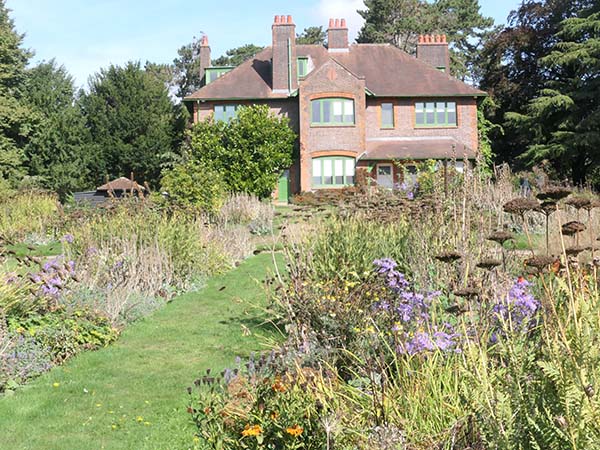Shaw's Corner is the former home of author and socialist George Bernard Shaw, and it is now managed by the Natonal Trust. At the end of September, I visited Shaw's Corner for the first time. Visitors who wish to visit the property must book in advance for visiting the house as National Trust permit visiting the house by guided tour only. In addition to the house, visitors can explore the garden and see the writing hut in the garden.

We were booked on the guided tour of the home first, and we learned about the house in its Arts and Crafts style, which was built in 1902. It's not too old of a house, and the National Trust took it on due to its association with the author. On the tour, were told about some of the items in the house, which belonged to Shaw and his wife. The rooms in the house have been left as a museum in the way that Shaw wanted to leave them for future visitors.

The house itself, which was built in 1902, was a rectory for the church. It was larger than it needed to be for the parish and put up for rent. It was rented by Shaw and his wife from 1906 until his death in 1950. (Shaw and his wife purchased the house in 1920.) The house also included 3.5 acres of land, which is a garden, orchard, and small wooded area.

On entering, we were told about the reception hallway. From the hallway, we explored four rooms: the library, the living room, the dining room, and the kitchen/scullery. The staircase is located in the hallway, and a couple of the rooms upstairs were open to view. The hallway includes paintings from travels, artwork gifted from Virginia Woolf's sister, and a collection of hats that Shaw wore for different activities.

The hearts in the staircase pillars are an Arts and Craft style.

After the hallway, we looked at the library. Shaw loved photography, so an old camera was on display as well as a typewriter and William Morris patterned curtains.


We then went into the living area and were told some information about the art and items in the room. The room included a painting of Shaw's wife, which she had painted for a friend but was told to keep it. Also are sculptures of Shaw's hand in marble and the Oscar that Shaw won. Shaw won a Nobel Prize for literature in 1925 and an Oscar in 1939 for "Pygmalion" (known today as "My Fair Lady").



The dining room had several photographs of some of the people that Shaw envied.

Up the stairs, we saw the bathroom and a bedroom as well as some prizes in a glass case.


The tour concluded in the kitchen.



After the house tour, we had a wander around the gardens.



Shaw wrote many of his works in the home and the revolving writer's hut in the garden. This hut could be moved to follow the sun's light. Shaw named the writer's hut "London" so that he could tell unwanted visitors that he was in London. After Shaw died, his ashes were mixed with his wife's, and they were scattered around the writer's hut.


We admired the views of the house and the plants in the garden, which were coming to their end in late September.




We enjoyed the thorough and interesting tour of Shaw's Corner, which was put together very well by the National Trust and volunteers. I always get a lot out of the guided tours as they pick out interesting items and facts. The garden is beautiful as well and would be worth a visit in the summer.



Leave a comment